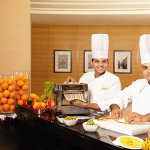Roti On A Roll
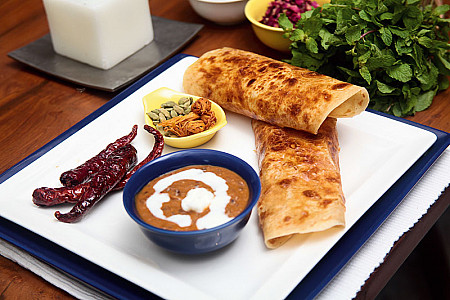
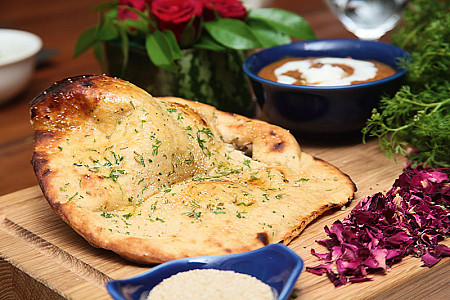
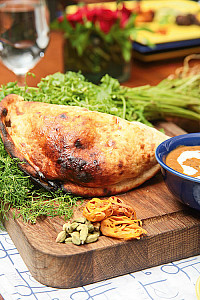
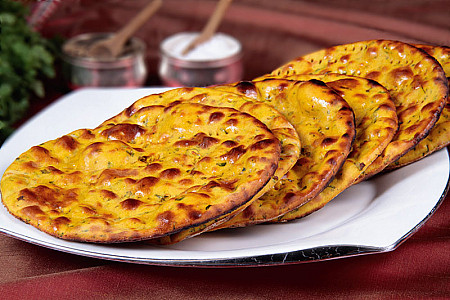
When it comes to main course meals, bread is usually reduced to something that is used to carry the meal forward rather than the star dish. But when it comes to Indian cuisine, some breads are made with such precision that it is hard to neglect them.
Especially if you have a discerning palate, what with flakes of coarsely crushed cumin popping and trails of saffron that fail to leave the palate hours after the last few pieces of the zaffran paratha have been savoured? Such is the magic of Indian breads, that are limited in number, but the flavours and techniques used to bring them out are endless.
According to Chef Surender Mohan from The Leela Palaces, Hotels and Resorts, “Indian breads can broadly be categorised into roti, chappati, naan, kulcha and paratha. The first two are conventional breads that we make at home using whole wheat or multi grain flour. Whereas naan is refined flour-based, while kulcha and parathas are stuffed variations of the same.”
At his Andheri-based kitchen, Chef Mohan dabbles with Indian breads such as flaky and fermented Malabari parathas, cottage cheese and dry pomegranate seed-stuffed Amritsari kulcha, gram flour-based missi roti and other underrated preparations. He says, “The core similarity between Indian and international breads is that both require tremendous patience, but once the basics are right, you can swap techniques, add new flavours and change the presentation styles as well.”
One restaurant that focuses on its breads as much as on its main meals is the Mahalaxmi-based Neel at Tote on the Turf. The restaurant rustles up a variety of breads ranging from Mughlai bakhumaas which is a sort of sour-dough bread to Lucknowi khamiri rotis that blend in a special North Indian spice mix containing essences of paan, khus and cardamom. Chef Mukhtar Qureshi from the restaurant says, “While most breads are baked on the tandoor, some such as ulte tawe ka paratha use a reverse griddle in order to obtain a unique shape and texture too.”
Apart from cooking, just like some international breads that require multiple hours or proving, Chef Qureshi too refrigerates the dough of bhakumas and taftan to obtain the right consistency before baking.
And it’s not just baking, even serving Indian breads with the right kind of gravy does the trick. Chef Mohan says, “The thumb rule is to pair a dry subji with a soft roti such as roomali or homely chappatis. Similarly drippy salans must be paired with crispy breads such as warqi parathas, tandoori roti and the like.”
Another restaurant that takes its breads very seriously is Ziya at the Oberoi Mumbai. “Here guests can savour naans flavoured with typical Indian flavours such as potato, garlic, red onion, kheema. “Similarly, we also serve breads tainted with gourmet ingredients such as saffron and sesame, olive, rosemary, basil and blue cheese to name a few,” says Chef Sahil Khullar from the restaurant. These breads get along well with traditional daals and gravies that Ziya has to offer.
INDIAN BREAD ETIQUETTE
Once you pick up a roti from the basket, it is essential that you eat it fully. Never place a broken piece back into the basket. Many Indian breads come with a bar of butter. Pierce your fork into it and rub it top of your roti. Never use your fingers to do this.
In case you want an extra slathering of clarified butter or ghee, ask your server to pour it with a spoon.
When cooking at home, never pair heavily flavoured bread with equally robust gravy. Keep either of the dishes toned down, to enjoy your meal to the fullest.
MISSI ROTI
Ingredients: Gram flour, 600 gm; Wheat flour, 200 gm; Maida, 200 gm; Onion (chopped), 100 gm; Mint leaves (chopped), 8 gm; Asafeotida, 1 pinch; Green chilli (chopped), 5 gm; Water, 500 ml; Oil, 50 ml; Salt and ajwain as per taste.
Method: In a bowl, combine all the ingredients and knead into a soft dough using water. Keep it aside for 10 minutes. Now wet your palms with some oil and roll the dough again to give it sheen and elasticity. Divide this into small roundels and roll out each into a circular roti. Pre-heat the oven at 250 degree Celsius and cook the missi roti until golden-brown. Serve hot.
(Recipe by Chef Surender Mohan, The Leela Palaces, Hotels and Resorts)
Related posts from Verve:
Verve Trending
Sorry. No data so far.
us on Facebook to stay updated with the latest trends

